D. H. Lawrence is best known to the general public as a writer of sexy books. In his own time, his treatment of sex made him notorious and caused him to run afoul of the authorities on a number of occasions. I have no desire to rehearse in detail the well-known history of Lawrence’s troubles with censorship, but for those who do not know anything of it a few details will suffice.
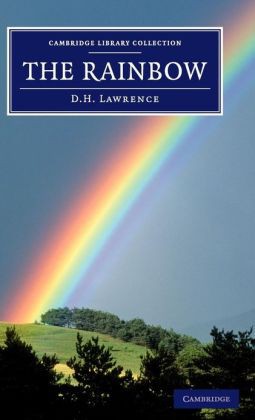 In September 1915 Lawrence’s novel The Rainbow, one of his major works, was published by Methuen. By November it had been banned by court order, largely due to Lawrence’s brief (and, by today’s standards, extremely tame) depiction of a lesbian affair. The following year Lawrence finished what is arguably his greatest novel, Women in Love. However, owing to the notoriety of The Rainbow as well as to Women in Love’s much more frank depiction of sexuality, he could not find a publisher for the novel until 1920. Disgusted by his treatment at the hands of his fellow countrymen, Lawrence moved himself and his wife Frieda to Sicily that year, thereby beginning a long sojourn abroad that would take them to Sardinia, Ceylon, Australia, California, and New Mexico.
In September 1915 Lawrence’s novel The Rainbow, one of his major works, was published by Methuen. By November it had been banned by court order, largely due to Lawrence’s brief (and, by today’s standards, extremely tame) depiction of a lesbian affair. The following year Lawrence finished what is arguably his greatest novel, Women in Love. However, owing to the notoriety of The Rainbow as well as to Women in Love’s much more frank depiction of sexuality, he could not find a publisher for the novel until 1920. Disgusted by his treatment at the hands of his fellow countrymen, Lawrence moved himself and his wife Frieda to Sicily that year, thereby beginning a long sojourn abroad that would take them to Sardinia, Ceylon, Australia, California, and New Mexico.
Lawrence was deterred neither by censorship nor by the frequent vilification he suffered at the hands of the press. In 1926, on a visit to Italy he wrote the first of three versions of Lady Chatterley’s Lover, his most sexually explicit work and, in fact, one of the most sexually explicit “serious” works of literature ever written. A small edition of the novel was brought out in Florence in 1928, and another in Paris. Various pirated editions were also printed.
Copies of the novel were seized by customs in both the United States and Great Britain, and the reviews that appeared were brutal. One English critic declared that the novel was “the most evil outpouring that has ever besmirched the literature of our country. The sewers of French pornography would be dragged in vain to find a parallel in beastliness . . . Unfortunately for literature as for himself, Mr. Lawrence has a diseased mind.”[1] (The famous court case in Britain occurred thirty years after Lawrence’s death, when Penguin Books brought out an unexpurgated edition of Lady Chatterley.)
In 1926 Lawrence had started to paint. He wrote to his friend Earl Brewster, a Buddhist, “I put a phallus, a lingam you call it, in each one of my pictures somewhere. And I paint no picture that won’t shock people’s castrated social spirituality.”[2] Predictably, when an exhibition of his paintings was held in London in 1929 it was raided by the police, though, as Jeffrey Meyers notes, the officers “politely waited to carry out their orders until the Aga Khan had finished viewing the pictures.”[3]
Why was Lawrence seemingly so preoccupied with sex? The answer is that he saw sex as a means to awaken the true self, and to discover not only our own inner being but the inner being of all things. In Fantasia of the Unconscious he writes, “To the individual, the act of coition is a great psychic experience, a vital experience of tremendous importance.”[4]
Lawrence was unquestionably influenced by Schopenhauer in his views about the metaphysical significance of sex. In his unpublished notebooks—summing up views he expressed more circumspectly in his published writings—Schopenhauer states
If I am asked where the most intimate knowledge of that inner essence of the world, of that thing in itself which I have called the will to live, is to be found, or where that essence enters most clearly into our consciousness, or where it achieves the purest revelation of itself, then I must point to ecstasy in the act of copulation. That is it! That is the true essence and core of all things, the aim and purpose of all existence.[5]
However, Lawrence (unlike Schopenhauer) saw the inner essence of things as having religious significance. He felt that the “life mystery” at the core of all was the only thing that he could honestly call God. Hence, he regarded sex as sacred—indeed as an act of divine worship—since it opens us to the life mystery. In a posthumously published essay Lawrence writes, “In the very darkest continent of the body there is God.”[6] This is the real key to understanding Lawrence’s treatment of sex: it is reverential; he regards sex as sacred, not as profane. The public attacks on Lawrence’s work as “smut” are hugely unjust, for Lawrence had a lifelong hatred of pornography precisely because he saw it as a profanation of sex.
An illustration of Lawrence’s attitude is his reaction to James Joyce’s Ulysses. As Jeffrey Meyers notes, it was, in part, Lawrence’s hostile reaction to Ulysses that spurred him to write Lady Chatterley’s Lover. In a letter Lawrence stated, “The last part of [Ulysses] is the dirtiest, most indecent, obscene thing ever written. . . . This Ulysses muck is more disgusting than Casanova. I must show that it can be done without muck.”[7] This may seem a trifle ironic, given how others had attacked Lawrence’s own work with similar invective. But, in fact, Lawrence’s attitude to Joyce is not hypocritical. He is not attacking the explicitness of Joyce’s treatment of sex, but rather what he regarded as its unforgivable irreverence.
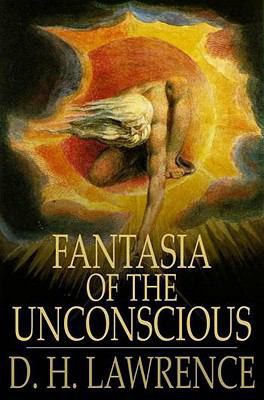 In Fantasia of the Unconscious Lawrence writes, “In sex we have our basic, most elemental being.”[8] Further, he declares that the procreative purpose of sex is “just a side-show.”[9] Lawrence rejects the reductive, scientific understanding of sex; part and parcel of the scientific will to nullify beauty and mystery and to make everything mundane and “practical.”
In Fantasia of the Unconscious Lawrence writes, “In sex we have our basic, most elemental being.”[8] Further, he declares that the procreative purpose of sex is “just a side-show.”[9] Lawrence rejects the reductive, scientific understanding of sex; part and parcel of the scientific will to nullify beauty and mystery and to make everything mundane and “practical.”
Sex can lead to reproduction, but it is no more correct to say that the “purpose” of sex is reproduction than it is to say that the purpose of eating is to fill our stomachs. More often than not, we eat not because we happen to really need nourishment just then, but because we take pleasure in eating, in the taste of food, and in the company of those we eat with. And frequently the food we enjoy ingesting has little actual nutritional value. If the purpose of eating were simply to acquire nourishment, then we ought not mind the idea of simply ingesting a tasteless paste full of vitamins, minerals, protein, and carbohydrates three times daily.
Sex, Lawrence tells us,
is our deepest form of consciousness. It is utterly non-ideal, non-mental. It is pure blood-consciousness. It is the basic consciousness of the blood, the nearest thing in us to pure material consciousness. It is the consciousness of the night, when the soul is almost asleep. The blood-consciousness is the first and last knowledge of the living soul: the depths.[10]
When we enter into what Schopenhauer calls “ecstasy in the act of copulation,” there is a sloughing off of intellect, of self-consciousness. The act is ecstatic precisely to the extent that this is accomplished. The Greek ekstasis could be translated literally as “standing outside oneself.” In ecstatic acts we have the sense of leaving ourselves, and certainly our consciousness of ourselves (our inner monitor, inner censor, inner doubter) behind. Insofar as we cannot accomplish this, the sexual act will be dissatisfying. The woman may experience little pleasure, and the man may even be unable to perform, should he fail to disengage the intellect.
Of course, when we are caught in the ecstasy of sex we are not literally unconscious. What happens, in effect, is that a different sort of consciousness takes over: what Lawrence calls “blood-consciousness.” What Lawrence means by this term is the pre-reflective, pre-conceptual, subterranean depth in consciousness: what he sometimes confusingly calls the “unconscious.”
Sometimes this type of consciousness is derisively labeled the “animal” in us. This is misleading, for we have a tendency not to think of ourselves as animals, and labeling the blood-consciousness “animal” becomes a way to disown it. But it is our own, and, of course, we are animals. In the heat of true, ecstatic sexual passion, one loses a sense of individuality. It is common to hear the participants speak (later on) of losing the sense of bodily boundaries, and feeling as if the two bodies merged into one. Strange, animal-like cries are uttered and motions become automatic rather than deliberately willed.
In sex we surrender our intellect and self-consciousness, and open ourselves to the blood-consciousness, to our primal self—so that we become, for the space of the act, that primal self. And this is the reason why modern people are so sex-obsessed.
To live in modern, industrialized society means to live almost constantly from what Lawrence calls the “upper centres,” from intellect. And it means to live surrounded at all times by the products of intellect, cocooned in a synthetic, human world built over top of the natural world, operating according to human ideas and ideals. Almost always, this life requires us to lead an existence that is false in certain fundamental ways; false and inimical to life and to the natural, primal self. Passionate sex, insofar as modern people can even manage it, is the only respite from this that most people know. As such, Lawrence believes that in sex we are fundamentally truer than at most other times in life. And reflection on what the sex act means may help us to recover this trueness in daily life, outside of sexual activity.
All of the above is an attempt to say “what sex is.” But Lawrence holds that ultimately it is ineffable:
We can never say, satisfactorily. But we know so much: we know that it is a dynamic polarity between human beings, and a circuit of force always flowing. . . . We know that in the act of coition the blood of the individual man, acutely surcharged with intense vital electricity—we know no word, so say “electricity,” by analogy—rises to a culmination, in a tremendous magnetic urge towards the blood of the female. The whole of the living blood in the two individuals forms a field of intense, polarized magnetic attraction. So, the two poles must be brought into contact. In the act of coition, the two seas of blood in the two individuals, rocking and surging towards contact, as near as possible, clash into a oneness.[11]
Lawrence’s remark about his use of the term “electricity” tells us that we should not take this description very literally. When he speaks of an “electricity” in the blood of a sexually aroused man or woman, he uses this term, for lack of a better one, to describe the peculiar sense of acute, tingling “aliveness” that one feels in sexual ecstasy. When he speaks of a “magnetic attraction” between the blood of man and woman, he means the uncanny, overpowering, and unchosen sense of attraction that one experiences for the other. It is a sense of attraction that at times makes men and women feel that they must come together or die.
We attempt to deflate the mystery of this attraction by chalking it up to “chemistry.” Indeed it may somehow be chemical, but to describe the physical conditions necessary for a profound experience to take place does not render it less profound, or less mysterious. It might seem a bit ironic, given Lawrence’s criticisms of science, that his own language has a kind of scientific veneer, with its talk of “electricity,” “magnetism,” and “polarity.” But Lawrence’s “science” is, in fact, a throwback to the vitalistic philosophy of nature of the Romantics.
Lawrence attempts to sum things up as follows: “Sex then is a polarization of the individual blood in man towards the individual blood in woman.”[12] At the root of this idea is a basic conviction of Lawrence’s, which cannot be overemphasized: that men and women are fundamentally and radically different—metaphysically different. (See my essay “D. H. Lawrence on Men and Women [2].”) In the same text he writes, “We are all wrong when we say there is no vital difference between the sexes.”
Lawrence wrote this in 1921 intending it to be provocative, but it is surely much more controversial in today’s world, where it has become a dogma in some circles to insist that sex differences (now called “gender differences”) are “socially constructed,” and that the only natural differences between the sexes are purely and simply anatomical. Lawrence continues: “There is every difference. Every bit, every cell in a boy is male, every cell is female in a woman, and must remain so. Women can never feel or know as men do. And in the reverse, men can never feel and know, dynamically, as women do.”[13]
 Interestingly, I believe that Lawrence derives the idea of “cells” being male or female from Otto Weininger’s Sex and Character, a text he was definitely familiar with. Weininger writes: “every cell of the organism . . . has a sexual character.” And: “In a male every part, even the smallest, is male, however much it may resemble the corresponding part of a female, and in the latter, likewise, even the smallest part is exclusively female.”[14]
Interestingly, I believe that Lawrence derives the idea of “cells” being male or female from Otto Weininger’s Sex and Character, a text he was definitely familiar with. Weininger writes: “every cell of the organism . . . has a sexual character.” And: “In a male every part, even the smallest, is male, however much it may resemble the corresponding part of a female, and in the latter, likewise, even the smallest part is exclusively female.”[14]
Setting Weininger aside, this is Lawence’s way of emphasizing that men and women are different all the way down, and that there are ways in which they can never understand each other, and never see as the other sees. Lawrence is concerned in particular (though this is not obvious) to guard against the claim that there are borderline cases of men and women who are (psychically) androgynous, straddling the divide between male and female:
A child is born sexed. A child is either male or female; in the whole of its psyche and physique is either male or female. Every single living cell is either male or female, and will remain either male or female as long as life lasts. And every single cell in every male child is male, and every cell in every female is female. The talk about a third sex, or about the indeterminate sex, is just to pervert the issue.[15]
The reference in the last sentence is to the ideas of figures like Magnus Hirschfeld and, indeed, Otto Weininger, both of whom argued that homosexuals were sexually “intermediate.” Part of the reason Lawrence is so vehement in this passage is that he had strong homosexual inclinations (as any honest reader of Women in Love, especially its deleted “Prologue,” will admit). Early in life he saw himself as an androgynous being, with a hefty share of femininity in his soul. However, he came to repudiate this idea and to regard it as having hindered his development as a man.
The Phallus
In coition, Lawrence writes, “the two seas of blood in the two individuals, rocking and surging towards contact, as near as possible, clash into a oneness.”[16] The means by which this connection occurs, where the blood of the man and the woman is brought together, is the phallus. One of Lawrence’s most important philosophical essays is “A Propos of ‘Lady Chatterley’s Lover,’” which he wrote partly to answer criticisms of the novel, and partly to make explicit and expound upon the novel’s message. He writes at one point that “The phallus is a column of blood that fills the valley of blood of a woman. The great river of male blood touches to its depths the great river of female blood—yet neither breaks its bounds.” The two blood streams, the male and the female, “encircle the whole of life.”[17] They never literally mingle, but coition is essentially an act in which the blood of the male, enfolded within an extension of his flesh, enters the blood-engorged flesh of the woman—and the two blood streams come as close to mingling as they ever will.
The result is a crisis; an ecstatic moment in which—as in the Zen experience of satori—there is the sudden, non-verbal intuition that this here now is all there is, and there is a loss of the sense of individual separateness and isolation; a sense of becoming absorbed into a greater unity. Lawrence describes the orgasm as follows: “There is a lightning flash which passes through the blood of both individuals, there is a thunder of sensation which rolls in diminishing crashes down the nerves of each—and then the tension passes.”[18]
In his later works, Lawrence writes often and explicitly of the metaphysical, indeed the divine significance of the phallus. For example, in the second of Lawrence’s three versions of Lady Chatterley’s Lover (published posthumously as John Thomas and Lady Jane) there is a scene in which Constance Chatterley lies beside her sleeping lover, contemplating his flaccid penis. “Wasn’t there a weird, grotesque godhead in it?” she asks herself, and what follows is a passage of great significance:
To most men, the penis was merely a member, at the disposal of the personality. Most men merely used their penis as they use their fingers, for some personal purpose of their own. But in a true man, the penis has a life of its own, and is the second man within the man. It is prior to the personality. And the personality must yield before the priority and the mysterious root-knowledge of the penis, or the phallus. For this is the difference between the two: the penis is a mere member of the physiological body. But the phallus, in the old sense, has roots, the deepest roots of all, in the soul and the greater consciousness of man, and it is through the phallic roots that inspiration enters the soul.[19]
Lawrence makes a traditional distinction in this passage (though, as usual, he is slip-shod about it) between the penis and the phallus, which is the erect penis. In cultures that have worshipped the penis, it always the erect penis that is depicted and revered. Why? Because, in a real sense, the phallus does not belong to the individual man. It is—notoriously—not under the control of his personality, his mental self-conscious being. It has a will of its own. It is the “second man within the man,” meaning that it is a direct expression or, if you will, externalization of the deeper, truer, self; of the unconscious, or blood-consciousness.
This self is “prior to the personality,” and indeed it is fundamentally the same in all men. So it transcends the individual—indeed it is an expression of the life mystery which permeates all of nature. The penis, Lawrence tells us, is a “mere member of the physiological body,” but the phallus is something that rises from out of the chthonic depth of nature itself. The phallus is our connection to those depths. When Lawrence says that it is “through the phallic roots that inspiration enters the soul” he means that it is insofar as we are able to surrender our intellect and mental awareness that we are guided by the wisdom of the blood-consciousness.
If a man’s mental self dominates him and grips him, refusing to let go, preoccupying him with thoughts, then he cannot achieve an erection. His mind has “blocked” the primal, unconscious self. This is all that the mind can do to the primal self—it cannot command it. Hence there is no “willing” an erection. But if a man can momentarily surrender his mental self, then the blood-consciousness is awakened, and the phallus comes to life. The virile man is admired because he has a connection to the primal force. The impotent man is pathetic in our eyes, because he has lost that connection. He is literally without power.
Thus, for Lawrence, sexual arousal in the male and the sex act following upon it become emblematic of what must take place if there is to be a general return to the blood-consciousness, and thus an achievement of lasting happiness, lasting satisfaction in the whole of life. There must be a surrender of idealism, and of the tendency to live strictly from the “upper centres.” There is no way to get to the natural self by way of intellect and its ideas, just as there is no willing an erection. All that mind can do is to let go—to do nothing. Then the blood-consciousness takes over and the result is that there rises up from the root of us a new man, a new self. New only in the sense that it is unfamiliar to us, for in truth it is actually the oldest of old selves.
Erection and a full, ecstatic sexual experience symbolize for Lawrence the successful reawakening of the primal self that is needed if we are to again become natural creatures and achieve our “fullness of being.” But they are not merely symbolic. Lawrence also sees coition as the deepest, most profound, and profoundly mysterious way in which we come into contact with our chthonic depth, and the chthonic depth of the natural world itself. Hence, in “A Propos of ‘Lady Chatterley’s Lover’” he says the following
[The] phallus is the connecting link between the two rivers [of male and female blood], that establishes the two streams in a oneness, and gives out of their duality a single circuit, forever. And this, this oneness gradually accomplished throughout a life-time in twoness, is the highest achievement of time or eternity. From it all things human spring, children and beauty and well-made things; all the true creations of humanity. And all we know of the will of God is that He wishes this, this oneness, to take place, fulfilled over a lifetime, this oneness within the great dual blood-stream of humanity.[20]
Here Lawrence makes it quite clear, as he does in innumerable other places, that his reverence for the phallus is a religious one. Indeed, it would not be a distortion to call his own, personal religion a form of “phallic worship.” This is, of course, a provocative choice of words, but not an inaccurate one. There is, in fact, a remarkable similarity between Lawrence’s views and Hindu Shaivism, the oldest surviving phallic cult in the world.
The God Shiva is a personification of what Lawrence means by the life mystery or “pan power,” as well as what Schopenhauer meant by the will in nature.[21] Alain Daniélou, one of the foremost Western interpreters of Shaivism, writes
As Lord of Yoga, Shiva is named Yogendra, Yogeshvara, Mahâyogi, since it is he who taught the world the Yoga method through which man can know himself, realize himself and communicate with subtle beings, beasts, plants and gods. He also teaches the dance and the music which leads to ecstasy, the intoxication which takes man out of himself. . . . His festivals are those of Spring, of the Renewal of Life, and of creative Eroticism. . . . He is naked, libidinous, and preaches rapture, love, detachment, and friendship with nature. God of Sensual Pleasure and of Death, he is present in the forest and the funeral pyre. Shiva is at the same time benevolent (Shambhu) and terrible (Bhîma).[22]
Although these and many other qualities are attributed to Shiva, the sacred Shaivite texts indicate that the true Shiva is beyond all human categories: “Shiva (the supreme divinity) is without sign (without sex), without color, without taste, without odor, beyond the reach of words or touch, without qualities, immutable and immobile.”[23] This being can therefore only be known through some tangible sign that it gives of itself in the physical, perceptible universe, and that sign is the phallus.
The Sanskrit word for phallus, lingam, literally means “sign.” Daniélou writes, “The lingam, or phallus, the source of life, is the form by which the Absolute Being, from whom the world is issued, can be evoked. . . . In the microcosm, which is to say in man, the sexual organ, the source of life, is the form in which the nature of the formless manifests itself.”[24]
Daniélou quotes liberally from ancient texts in order to explain the Shaivite attitude toward the phallus and its relationship to Shiva. One such text states, “Shiva said ‘I am not distinct from the phallus. The phallus is identical with me, and therefore must be worshipped. My well-beloved! Wherever there is an upright male organ, I myself am present, even if there is no other representation of me.”[25] This passage indicates that the phallus is not, in fact, merely a symbol of Shiva, but is a physical “expression” of the god—the most perfect expression of the god, in fact. In a way, Shiva is distinct from the phallus, but in a way the phallus is Shiva.
We find just the same sort of mystical logic in Lawrence: the phallus is an expression of the life mystery, as the blood-consciousness that animates it is an expression of the life mystery; but the phallus, and blood-consciousness just are the life mystery, as it expresses itself in us. The phallus is our link to the life force itself. Daniélou writes, “The penis is therefore the organ through which a link is established between man . . . and the creative force which is the nature of the divine.”[26] Lawrence expresses precisely this Shaivite conception in John Thomas and Lady Jane, when Constance Chatterley has an argument with her very modern and irreligious sister:
“I don’t care!” she said stubbornly to Hilda at bedtime. “I know the penis is the most godly part of a man. . . . I know it is the penis which connects us with the stars and the sea and everything. It is the penis which touches the planets, and makes us feel their special light. I know it. I know it was the penis which really put the evening stars into my inside self. I used to look at the evening star, and think how lovely and wonderful it was. But now it’s in me as well as outside me, and I need hardly look at it. I am it. I don’t care what you say, it was the penis gave it me.”[27]
According to Daniélou, Shaivism regards the procreative purpose of sex as “a side show” – just as Lawrence does. Daniélou writes that the phallus has a dual role: “the inferior one of procreation and the superior one of contacting the divine state by means of the ecstasy caused by pleasure (ànanda). The orgasm is a ‘divine sensation.’ So whereas paternity attaches man to the things of the earth, the ecstasy of pleasure can reveal divine reality to him, leading him to detachment and spiritual realization.”[28]
The orgasm, for Lawrence as well as for Shaivism, is a religious experience in which selfhood is transcended and we become reabsorbed, momentarily, into the life mystery; connected to “the stars and the sea and everything.” Daniélou quotes another Shaivite text: “Every orgasm, every pleasure is a divine experience. The entire universe springs forth from enjoyment. Pleasure is at the origin of all that exists.”[29]
Just as Lawrence’s ideas about the metaphysical significance of the phallus and intercourse can be likened to Shaivism, his views about the use of sex as a means to “awakening” can be likened to Tantra. Tantra refers to the set of practical techniques and methods used to bring the individual to union with the divine source.
In the West, we tend to associate Tantra exclusively with a kind of “sex magic,” and although there are other forms of Tantra this is, in fact, the one that I am drawing on in making comparisons to Lawrence. Tantric sex actually involves a rather overwhelmingly complex collection of ritual preparations, mantras, and physical positions. None of these are truly relevant to our concerns here. Suffice it to say that the theory behind Tantric sex involves the belief that if intercourse is approached properly, with an understanding of the metaphysical significance of the act, it affords the participants the opportunity to achieve a state of transcendence.
They lose their sense of individuality and merge with each other, and through merging with each other—through bringing together the male and female natures—they participate in the creative power represented by Shiva. Again, the parallels to Lawrence are obvious. He too regarded the man and the woman as representing eternal male and female powers, and he saw in intercourse a way in which the two become one (“the highest achievement of time or eternity”) and in so doing, lose themselves in the life mystery.
Notes
[1] Quoted in Jeffrey Meyers, D. H. Lawrence: A Biography (New York: Alfred A. Knopf, 1990), 362.
[2] Quoted in Meyers, 367.
[4] D. H. Lawrence, Fantasia of the Unconscious in Fantasia of the Unconscious and Psychoanalysis and the Unconscious (New York: Penguin, 1971), 106.
[5] Arthur Schopenhauer, Manuscript Remains, trans. E. F. J. Payne (Oxford: Berg, 1988–90), vol. 3, 262.
[6] D. H. Lawrence, Phoenix, ed. Edward McDonald (New York: Viking, 1968), 759 (“The Novel and the Feelings”).
[7] Quoted in Meyers, 362.
[14] Otto Weininger, Sex and Character, trans. Ladislaus Löb (Bloomington: Indiana University Press, 2005), 17.
[17] D. H. Lawrence, Phoenix II, ed. Warren Roberts and Harry T. Moore (New York: Viking, 1971), 505 (“A Propos of “Lady Chatterley’s Lover’”).
[19] D. H. Lawrence, John Thomas and Lady Jane (New York: Penguin Books, 1977), 238.
[20] Phoenix II, 506 (“A Propos of “Lady Chatterley’s Lover’”).
[21] Alain Daniélou argues that the Greek Pan is equivalent to Shiva. See Alain Daniélou, The Phallus, trans. Jon Graham (Rochester, Vermont: Inner Traditions, 1995), 47–48.
[22] Alain Daniélou, Gods of Love and Ecstasy: The Traditions of Shiva and Dionysus, no translator credited (Rochester, Vermont: Inner Traditions, 1992), 51.
[23] Linga Purána, 1.3.2–3. Quoted in Alain Daniélou, The Phallus, 11.
[24] Daniélou, The Phallus, 11–13.
[25] Quoted in Daniélou, Gods of Love and Ecstasy, 56.
[27] John Thomas and Lady Jane, 312.
[28] Daniélou, The Phallus, 18.



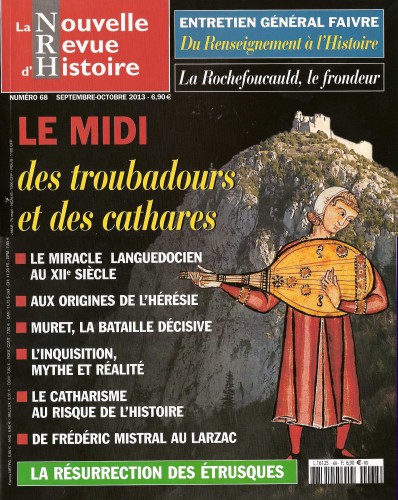

 del.icio.us
del.icio.us
 Digg
Digg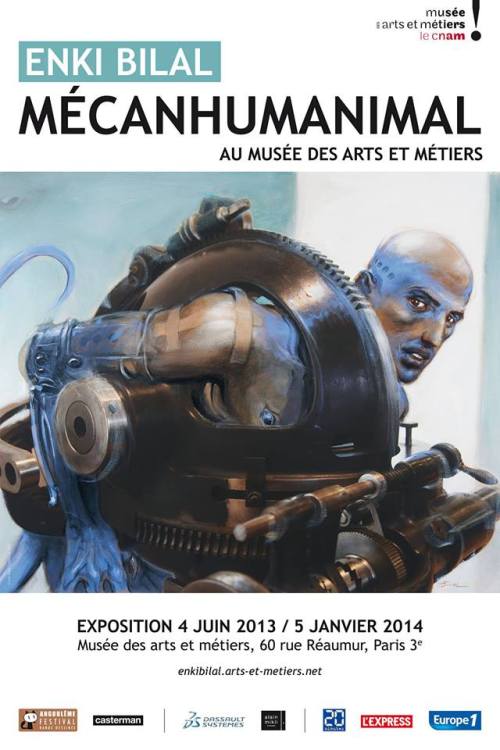



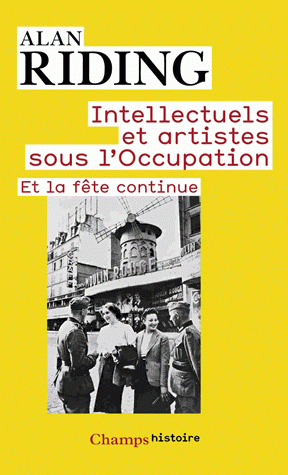 Le premier mérite de l’auteur, journaliste américain installé de longue date en France, c’est qu’il évite d’aborder une période compliquée avec des idées simples. Peu de périodes furent aussi compliquées que celle de l’Occupation. Alan Riding pose les bonnes questions : « Est-ce que le fait d’avoir travaillé sous l’Occupation était systématiquement une forme de collaboration ? » Des questions cruciales pour les intellectuels et artistes.
Le premier mérite de l’auteur, journaliste américain installé de longue date en France, c’est qu’il évite d’aborder une période compliquée avec des idées simples. Peu de périodes furent aussi compliquées que celle de l’Occupation. Alan Riding pose les bonnes questions : « Est-ce que le fait d’avoir travaillé sous l’Occupation était systématiquement une forme de collaboration ? » Des questions cruciales pour les intellectuels et artistes. 

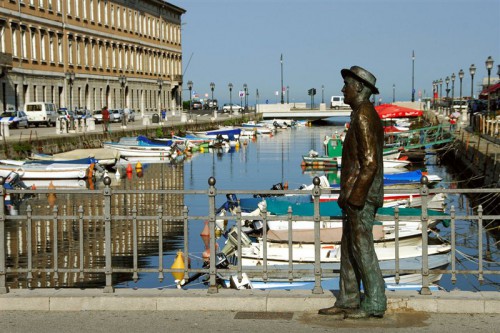









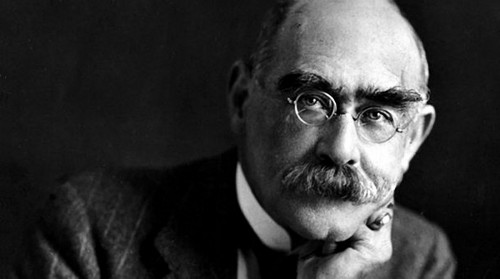
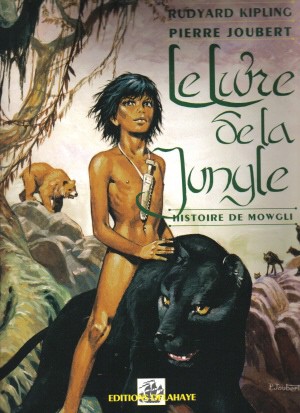 Joseph Rudyard Kipling est né le 30 décembre 1865, à Bombay, où ses parents sont arrivés huit mois plus tôt. Enfant, Kipling parle l’hindoustani aussi bien que l’anglais et, s’échappant du bungalow familial en compagnie de sa nounou (ayah), il découvre les foules indiennes aux turbans multicolores, les illusionnistes montreurs de serpents, les sons et les odeurs du bazar de Borah.
Joseph Rudyard Kipling est né le 30 décembre 1865, à Bombay, où ses parents sont arrivés huit mois plus tôt. Enfant, Kipling parle l’hindoustani aussi bien que l’anglais et, s’échappant du bungalow familial en compagnie de sa nounou (ayah), il découvre les foules indiennes aux turbans multicolores, les illusionnistes montreurs de serpents, les sons et les odeurs du bazar de Borah.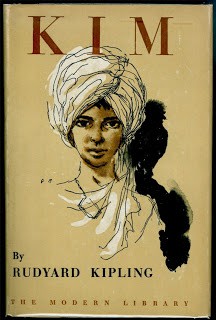 Enfin il y a Kim, cette grande fresque publiée en 1901, roman picaresque, envoûtant, colonialiste et généreux, « l’oeuvre de la vie de Kipling ». Bien que le personnage principal en soit l’Inde, une Inde totale, éternelle, l’Inde de la grande route de liaison, l’un des personnages principaux est afghan. Celui-ci, Mahbub Ali, est marchand de chevaux ; il passe sa vie sur les pistes, entre Lahore et « la contrée mystérieuse au-delà des passes du Nord ». Agent des Britanniques, il surveille depuis Peshawar les principautés des montagnes. Selon Zorgbibe, Mahbub Ali incarne aux yeux de Kipling « à la fois l’Afghanistan hostile, incontrôlable et redouté, et l’espoir d’une alliance avec une fraction des Afghans » – ce qui est probablement le lien le plus pertinent qui puisse être établi avec les enjeux du conflit actuel.
Enfin il y a Kim, cette grande fresque publiée en 1901, roman picaresque, envoûtant, colonialiste et généreux, « l’oeuvre de la vie de Kipling ». Bien que le personnage principal en soit l’Inde, une Inde totale, éternelle, l’Inde de la grande route de liaison, l’un des personnages principaux est afghan. Celui-ci, Mahbub Ali, est marchand de chevaux ; il passe sa vie sur les pistes, entre Lahore et « la contrée mystérieuse au-delà des passes du Nord ». Agent des Britanniques, il surveille depuis Peshawar les principautés des montagnes. Selon Zorgbibe, Mahbub Ali incarne aux yeux de Kipling « à la fois l’Afghanistan hostile, incontrôlable et redouté, et l’espoir d’une alliance avec une fraction des Afghans » – ce qui est probablement le lien le plus pertinent qui puisse être établi avec les enjeux du conflit actuel.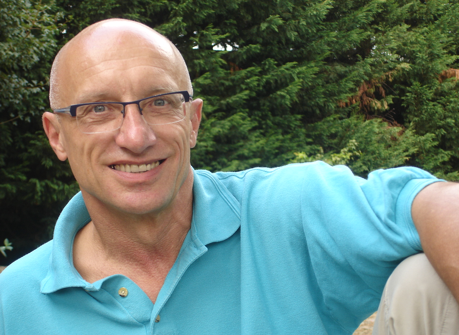
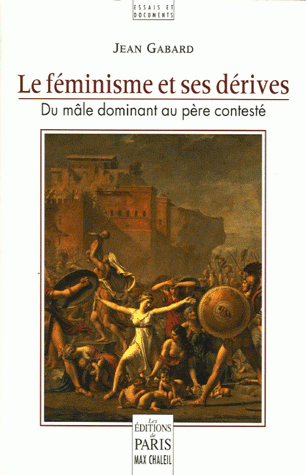 Dans son livre, Le féminisme et ses dérives, rendre un père à l’enfant-roi, le professeur d’histoire-géographie et ancien féministe Jean Gabard nous explique comment et pourquoi notre société en est arrivée là. Il ne nous donne pas de recette miracle mais il nous explique que deux idéolog
Dans son livre, Le féminisme et ses dérives, rendre un père à l’enfant-roi, le professeur d’histoire-géographie et ancien féministe Jean Gabard nous explique comment et pourquoi notre société en est arrivée là. Il ne nous donne pas de recette miracle mais il nous explique que deux idéolog

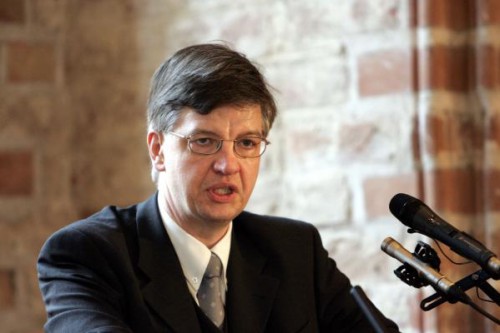



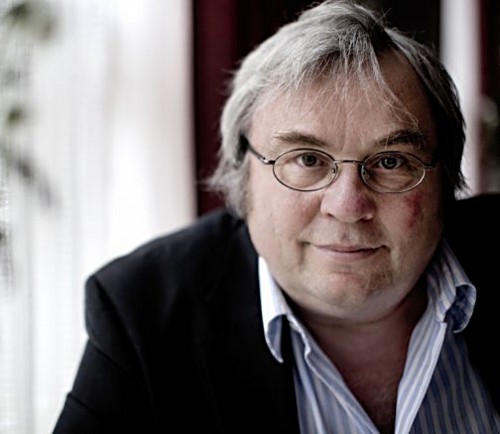
 In September 1915 Lawrence’s novel The Rainbow, one of his major works, was published by Methuen. By November it had been banned by court order, largely due to Lawrence’s brief (and, by today’s standards, extremely tame) depiction of a lesbian affair. The following year Lawrence finished what is arguably his greatest novel, Women in Love. However, owing to the notoriety of The Rainbow as well as to Women in Love’s much more frank depiction of sexuality, he could not find a publisher for the novel until 1920. Disgusted by his treatment at the hands of his fellow countrymen, Lawrence moved himself and his wife Frieda to Sicily that year, thereby beginning a long sojourn abroad that would take them to Sardinia, Ceylon, Australia, California, and New Mexico.
In September 1915 Lawrence’s novel The Rainbow, one of his major works, was published by Methuen. By November it had been banned by court order, largely due to Lawrence’s brief (and, by today’s standards, extremely tame) depiction of a lesbian affair. The following year Lawrence finished what is arguably his greatest novel, Women in Love. However, owing to the notoriety of The Rainbow as well as to Women in Love’s much more frank depiction of sexuality, he could not find a publisher for the novel until 1920. Disgusted by his treatment at the hands of his fellow countrymen, Lawrence moved himself and his wife Frieda to Sicily that year, thereby beginning a long sojourn abroad that would take them to Sardinia, Ceylon, Australia, California, and New Mexico. In Fantasia of the Unconscious Lawrence writes, “In sex we have our basic, most elemental being.”[8] Further, he declares that the procreative purpose of sex is “just a side-show.”[9] Lawrence rejects the reductive, scientific understanding of sex; part and parcel of the scientific will to nullify beauty and mystery and to make everything mundane and “practical.”
In Fantasia of the Unconscious Lawrence writes, “In sex we have our basic, most elemental being.”[8] Further, he declares that the procreative purpose of sex is “just a side-show.”[9] Lawrence rejects the reductive, scientific understanding of sex; part and parcel of the scientific will to nullify beauty and mystery and to make everything mundane and “practical.” Interestingly, I believe that Lawrence derives the idea of “cells” being male or female from Otto Weininger’s Sex and Character, a text he was definitely familiar with. Weininger writes: “every cell of the organism . . . has a sexual character.” And: “In a male every part, even the smallest, is male, however much it may resemble the corresponding part of a female, and in the latter, likewise, even the smallest part is exclusively female.”[14]
Interestingly, I believe that Lawrence derives the idea of “cells” being male or female from Otto Weininger’s Sex and Character, a text he was definitely familiar with. Weininger writes: “every cell of the organism . . . has a sexual character.” And: “In a male every part, even the smallest, is male, however much it may resemble the corresponding part of a female, and in the latter, likewise, even the smallest part is exclusively female.”[14]
 Interview.
Interview. 


